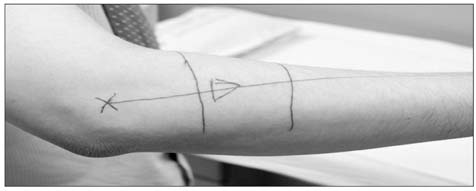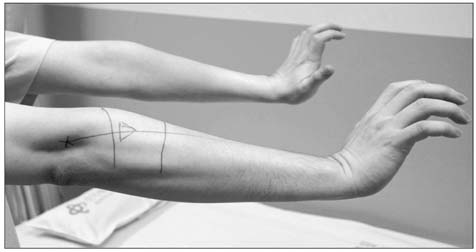Clin Orthop Surg.
2010 Sep;2(3):173-178. 10.4055/cios.2010.2.3.173.
Prospective Evaluation of the Effectiveness of a Home-Based Program of Isometric Strengthening Exercises: 12-Month Follow-up
- Affiliations
-
- 1Department of Orthopaedic Surgery, Konkuk University Hospital, Seoul, Korea.
- 2Department of Orthopaedic Surgery, Bundang Jesaeng General Hospital, Seongnam, Korea. orthopaedics11@gmail.com
- KMID: 999437
- DOI: http://doi.org/10.4055/cios.2010.2.3.173
Abstract
- BACKGROUND
The aim of this prospective randomized clinical trial was to investigate the efficacy of a home-based program of isometric strengthening exercises for the treatment of the lateral epicondylitis (LE) of the distal humerus. We hypothesized that 1) use of isometric strengthening exercises would result in clinical benefits similar to those provided by medication and pain relief and 2) functional improvements after exercise would be time-dependent.
METHODS
Patients were assigned to one of two groups: 1) an immediate physical therapy group (group I), or 2) a delayed physical therapy group (group D). Group I patients (n = 16) were instructed how to do the exercises at their first clinic visit and immediately carried out the exercise program. Group D patients (n = 15) learned and did the exercises after being on medications for 4 weeks.
RESULTS
Outcomes at the 1-month clinic visit indicated that pain (measured using a visual analogue scale [VAS]) had been significantly reduced in group I compared to group D (p < 0.01). However, significant differences between groups were not found at 3-, 6-, and 12-month follow-up for either VAS scores or Mayo elbow performance scores. For modified Nirschl/Pettrone scores, a significant difference between groups was found only at the 1-month follow-up visit. By then, the number of participants who returned to all activities with no pain or occasional mild pain was six (37%) in Group I and two (13%) in Group D (p = 0.031). At the final follow-up visit, 88% of all participants performed physical activities without pain.
CONCLUSIONS
Isometric strengthening exercises done early in the course of LE (within 4 weeks) provides a clinically significant improvement.
MeSH Terms
Figure
Cited by 1 articles
-
Pharmacologic treatment of osteoarthritis
Seung-Hoon Baek, Shin-Yoon Kim
J Korean Med Assoc. 2013;56(12):1123-1131. doi: 10.5124/jkma.2013.56.12.1123.
Reference
-
1. Kraushaar BS, Nirschl RP. Tendinosis of the elbow (tennis elbow): clinical features and findings of histological, immunohistochemical, and electron microscopy studies. J Bone Joint Surg Am. 1999. 81(2):259–278.
Article2. Stasinopoulos D, Stasinopoulou K, Johnson MI. An exercise programme for the management of lateral elbow tendinopathy. Br J Sports Med. 2005. 39(12):944–947.
Article3. Smidt N, van der Windt DA, Assendelft WJ, Deville WL, Korthals-de Bos IB, Bouter LM. Corticosteroid injections, physiotherapy, or a wait-and-see policy for lateral epicondylitis: a randomised controlled trial. Lancet. 2002. 359(9307):657–662.
Article4. Tonks JH, Pai SK, Murali SR. Steroid injection therapy is the best conservative treatment for lateral epicondylitis: a prospective randomised controlled trial. Int J Clin Pract. 2007. 61(2):240–246.
Article5. Labelle H, Guibert R, Joncas J, Newman N, Fallaha M, Rivard CH. Lack of scientific evidence for the treatment of lateral epicondylitis of the elbow: an attempted meta-analysis. J Bone Joint Surg Br. 1992. 74(5):646–651.
Article6. Martinez-Silvestrini JA, Newcomer KL, Gay RE, Schaefer MP, Kortebein P, Arendt KW. Chronic lateral epicondylitis: comparative effectiveness of a home exercise program including stretching alone versus stretching supplemented with eccentric or concentric strengthening. J Hand Ther. 2005. 18(4):411–419.
Article7. Nirschl RP. Elbow tendinosis/tennis elbow. Clin Sports Med. 1992. 11(4):851–870.
Article8. Stahl S, Kaufman T. The efficacy of an injection of steroids for medial epicondylitis: a prospective study of sixty elbows. J Bone Joint Surg Am. 1997. 79(11):1648–1652.9. Turchin DC, Beaton DE, Richards RR. Validity of observer-based aggregate scoring systems as descriptors of elbow pain, function, and disability. J Bone Joint Surg Am. 1998. 80(2):154–162.
Article10. Khan KM, Cook JL, Kannus P, Maffulli N, Bonar SF. Time to abandon the "tendinitis" myth. BMJ. 2002. 324(7338):626–627.
Article11. Ohberg L, Lorentzon R, Alfredson H. Eccentric training in patients with chronic Achilles tendinosis: normalised tendon structure and decreased thickness at follow up. Br J Sports Med. 2004. 38(1):8–11.
Article12. Alfredson H, Lorentzon R. Chronic Achilles tendinosis: recommendations for treatment and prevention. Sports Med. 2000. 29(2):135–146.13. Svernlov B, Adolfsson L. Non-operative treatment regime including eccentric training for lateral humeral epicondylalgia. Scand J Med Sci Sports. 2001. 11(6):328–334.
Article14. Stanish WD, Rubinovich RM, Curwin S. Eccentric exercise in chronic tendinitis. Clin Orthop Relat Res. 1986. (208):65–68.
Article
- Full Text Links
- Actions
-
Cited
- CITED
-
- Close
- Share
- Similar articles
-
- The Development and Evaluation of a Motivation-Strengthening Obesity Management Program for Obese Subjects with Visual Impairment
- Are home‑based exercises effective to reduce blood pressure in hypertensive adults? A systematic review
- Effect of Lumbar Extensor Strengthening in Chronic Low Back Pain Patients
- Cardiovascular Responses to Isometric Handgrip Exercise
- Exercise for patients with low back pain



